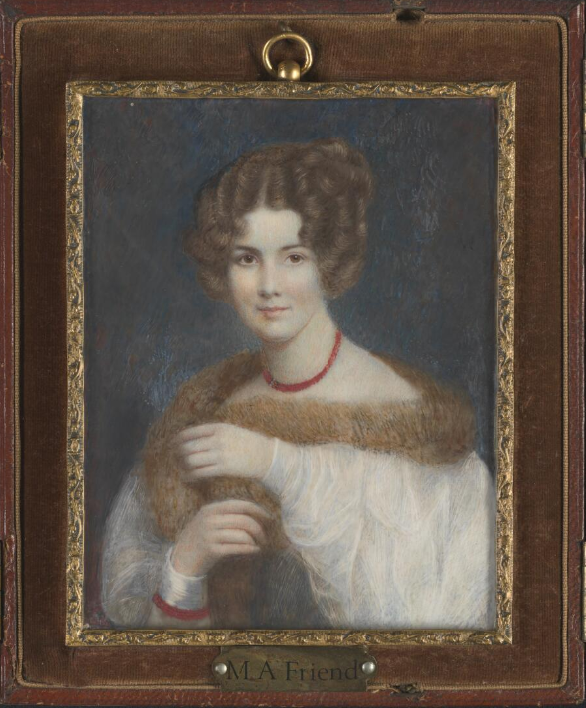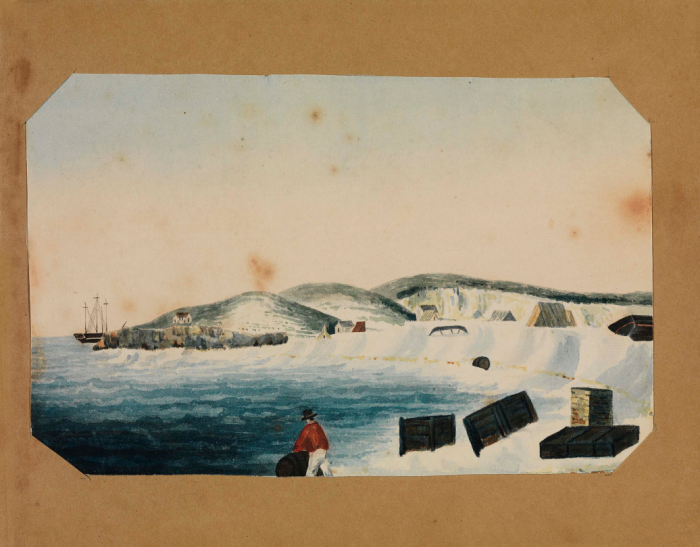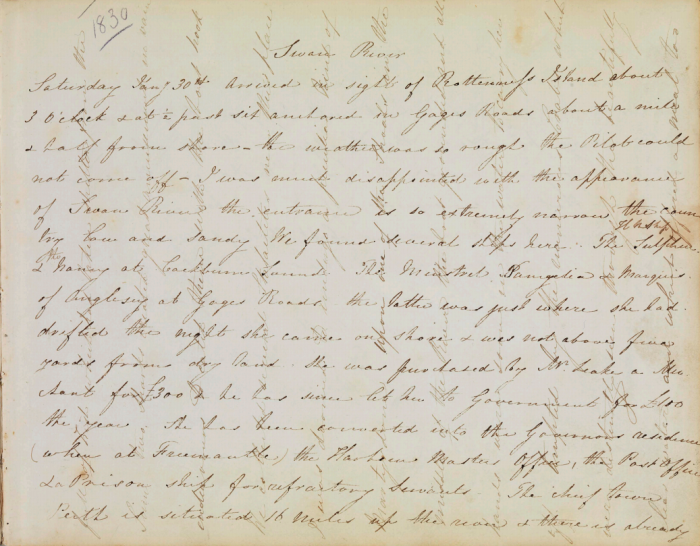This week Dr. Kate discusses Mary Ann Friend’s journal, an account of the settlement of the Swan River 1829-1831. Of great cultural significance to Western Australia, the journal is one of the many treasures of State Library.
Who was Mary Ann Friend?
Mary Ann Friend was born in London around 1800, daughter of John Ford of Hampstead. In 1826 she married Matthew Curling Friend (1792-1871), a retired naval officer, inventor and nautical scientist.
Three years later they left Portsmouth on board the Wanstead, a merchant ship of which her husband was master, transporting settlers to the new Swan River settlement in Western Australia. They arrived on 30 January 1830 – eight months after the first British settlers had embarked.
Why is her journal significant?
Of exceptional historical interest to Western Australia, Friend’s journal contains one of the earliest illustrated eye-witness accounts of the Swan River Colony.
Friend’s journal, illustrated with her own sketches, includes three unpublished views of Fremantle in the first year of its foundation, and two unpublished manuscript maps of the Swan River Settlements.
The journal also includes a detailed description of her stay at the Swan River settlements between 30 January and 19 March 1830, capturing the very earliest months of their existence (the colony was founded only in early June the previous year, and settlement at Perth began on 12 August).
What does she say about the Swan River Colony?
Mary Ann Friend’s journal includes her impressions of many aspects of life in the colony, including infrastructure, diet, the climate, and colonist interactions with Aboriginal peoples.
Her commentary is lively and critical, she detailed colonists struggles and discontent:
- I must say there appears a great want of energy on part of the settlers; it is true they are waiting for the season to sow their seeds, but I do not see why the intermediate time should be spent in doing nothing, which is the case with many things -- they might at all events be erecting their houses and preparing for the winter. Melancholy appears to pervade all classes and great dread is felt lest there should be a scarcity of provisions
She found joy in simple and unusual pleasures:
- The town of Freemantle strongly resembles a Country Fair and has a pretty appearance, the pretty white tents looking much like booths -- at present there are not above five or six houses.
Her thoughts on the local food:
- Fish is very plentiful. The snapper is the most common and is very good, the best I tasted on the coast.
- The Gentlemen gave me a black swan, the only one I saw at Swan River… had the swan for dinner and found it very good eating; it was dressed the same as goose; the flesh is dark but tender and well flavoured.
- The only vegetable found is samphire, which is either eaten with vinegar or boiled.
Her musings on the environment and climate:
- It is very true that the country is “beautifully undulating and thinly wooded” but alas the soil is nothing but sand.
- Took my first walk out with Matthew, found the soil extremely sandy but covered with verdure. The trees were quite bleached and learning in one direction, giving evident proof of constant heavy winds from one quarter, I understood from those who had first arrived at the commencement of winter that the winds were truly dreadful, coming in sudden squalls and violent bursts of rain. Tents were sometimes entirely blown away.
- Am just roasted!!! Thermometer 92 in the shade
- Heat excessive. Thermometer 98 in the shade; suffered much from the warmth and the flies are so troublesome.
What happened to Mary Ann Friend after she visited the Swan River?
After the voyage to Australia, they returned and settled in Launceston in July 1832, where Matthew had been appointed Port officer. They lived at George Town until Mary Ann’s death there on 27 December 1838. Matthew remarried in 1840 and returned to England due to ill health in 1852. Her name on the headstone at George Town General Cemetery, Tasmania, is shown as "Mary Anne Friend".
State Library’s acquisition of the journal
In October 2012, the State Library of Western Australia purchased the original journal from Christie’s auction house in London. It was purchased with assistance from the Australian Government through the National Cultural Heritage Account and arrived in WA in January 2013.
Substantial conservation work was undertaken on the journal, which came to the State Library in a poor condition - the binding no longer held the quires, the covers were broken and detached from the spine, and a number of pages were torn. The watercolours were especially damaged and were painstakingly pieced back together and lined with Japanese Tissue. As part of the conservation work the journal was unbound, allowing the journal to be fully digitised before being re-bound using similar materials and techniques as used in the original binding.
A typescript of the journal is now available online through the State Library catalogue. It can be viewed for FREE by anyone, anywhere, anytime. You can also view photographs of Mary Ann Friend's original journal.
For more stories about the State Library's collections and materials, follow @statelibrarywa on Facebook and Twitter.
Recorded live on ABC Radio Perth on 7 April 2020.



